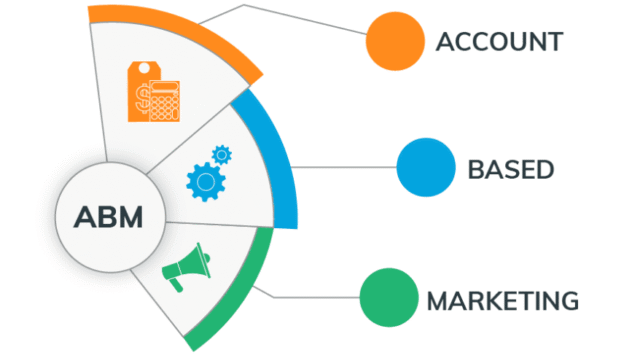The marketing landscape continues evolving. Mass marketing approaches increasingly fall short as sophisticated buyers expect personalized experiences tailored to their specific challenges.
Enter account-based inbound marketing.
This powerful strategy merges the precision of account-based marketing with the magnetism of inbound methodology. The result? Deeply personalized content experiences that resonate with high-value prospects.
For B2B companies especially, this approach transforms how organizations engage with their most promising potential clients.
Understanding Account-Based Inbound Marketing
Traditional inbound casts a wide net, attracting diverse prospects through valuable content. Account-based marketing targets specific high-value accounts with personalized outreach.
Account-based inbound combines these strengths.
Rather than choosing between broad appeal and targeted focus, this hybrid approach creates personalized inbound journeys for pre-identified high-value accounts. It delivers the right content to the right people at precisely the right moment.
The synergy creates impressive results.
According to research from SiriusDecisions, companies using account-based strategies see 91% larger deal sizes compared to traditional approaches. When combined with inbound methodology, engagement rates often increase by 3-5 times.
Identifying Your High-Value Target Accounts
Successful account-based inbound marketing begins with identifying the right prospects. These high-value targets should align with your ideal customer profile across multiple dimensions.
Look beyond basic firmographics.
Consider factors like technological maturity, growth trajectory, organizational culture, and strategic initiatives when building your target account list. The goal is identifying organizations that will benefit most substantially from your solutions.
Quality trumps quantity emphatically.
Most organizations find greater success focusing intensely on 10-20 perfectly matched accounts rather than diluting efforts across hundreds of marginal prospects. This concentration allows for meaningfully personalized content creation.
Mapping The Buying Committee
B2B purchasing decisions rarely rest with a single individual. Understanding the entire buying committee proves essential for effective personalization.
Different roles need different content.
The technical evaluator seeks detailed specifications. The financial buyer focuses on ROI and TCO calculations. The end-user cares about implementation experience and daily usability.
For each target account, map key stakeholders across:
Decision-makers who approve purchases Influencers who shape requirements Gatekeepers who control access Users who implement solutions Champions who advocate internally
This comprehensive understanding guides content development that addresses each stakeholder’s specific concerns within their unique organizational context.
Creating Account-Specific Content Experiences
Personalization exists on a spectrum. The depth depends on account value and available resources. Consider these progressive approaches:
Industry-specific content addresses challenges common within a particular vertical.
Account-segment content targets clusters of similar organizations facing comparable challenges.
Account-specific content speaks directly to individual organizations using their terminology, examples, and context.
Even without creating entirely custom content for each account, small personalization touches make remarkable differences. Custom introductions, tailored examples, or organization-specific data points transform generic content into highly relevant resources.
Personalized Inbound Journeys
Effective account-based inbound creates tailored pathways guiding prospects through their buyer’s journey. This requires understanding each account’s current position and creating appropriate next steps.
Some accounts need awareness content addressing unrecognized challenges.
Others require consideration content comparing potential solutions.
The most advanced prospects benefit from decision content validating their selection criteria.
At Inbound Marketo, we’ve found that mapping content to both buying stage and stakeholder role dramatically increases engagement with high-value accounts.
Content Distribution Strategies
Creating personalized content accomplishes little without strategic distribution. Multiple channels working together ensures your carefully crafted messages reach intended audiences.
Personalized website experiences make powerful impressions.
Using cookies or IP-based identification, you can display custom content, case studies, or CTAs tailored to specific target accounts. This immediate relevance significantly increases engagement.
Email remains exceptionally effective when properly personalized.
Rather than generic newsletters, create account-specific updates highlighting relevant content, events, or insights. Personalization extends beyond just using the recipient’s name – reference their specific challenges, industry developments, or previous interactions.
Social targeting reaches buying committee members directly.
LinkedIn especially offers robust targeting options for reaching specific individuals within target accounts. Custom audiences and sponsored content deliver personalized messages precisely where key stakeholders spend their professional time.
Aligning Sales and Marketing Teams
Account-based inbound marketing demands seamless collaboration between sales and marketing teams. This partnership ensures consistent experiences across all touchpoints.
Sales insights inform content creation.
Account executives provide valuable intelligence about prospect challenges, objections, and priorities. This frontline information guides content development addressing specific concerns within target accounts.
Marketing assets strengthen sales conversations.
Personalized content gives sales representatives valuable tools for meaningful engagement. Custom case studies, ROI calculators, or implementation roadmaps provide compelling conversation starters tailored to each account’s specific situation.
Shared metrics create unified focus.
Both teams should track account engagement, content consumption patterns, and pipeline progression collaboratively. This common view creates shared accountability for moving target accounts through their buyer’s journey.
Measuring Account-Based Inbound Success
Traditional marketing metrics often fall short for account-based inbound approaches. Volume-based measurements like total leads generated become less relevant than engagement depth within target accounts.
Focus on these more meaningful indicators:
Account penetration – reaching multiple stakeholders Engagement quality – time spent with content Content journey progression – consuming multiple resources Sales conversation quality – informed by content consumption Deal velocity – accelerated decision processes Deal size – larger average contracts
According to research from TOPO, companies successfully implementing account-based approaches see 2x faster revenue growth compared to those using traditional demand generation alone.
Technology Enablers for Personalization
Several technology categories support account-based inbound marketing implementation:
Account intelligence platforms identify and prioritize target accounts based on intent signals, technographic data, and engagement patterns.
IP-based identification tools recognize when target accounts visit your website, enabling personalized experiences based on the visiting organization.
Content personalization platforms dynamically adjust website content, CTAs, and resources based on visitor attributes and behaviors.
Marketing automation systems track engagement across channels and trigger personalized follow-up based on specific account activity.
Analytics tools measure account-level engagement by aggregating individual interactions into a comprehensive view of account progress.
Overcoming Common Challenges
Account-based inbound marketing presents several implementation challenges worth addressing proactively:
Content creation demands can overwhelm teams unused to personalization. Start with modular content frameworks that allow customization of specific elements rather than creating everything from scratch.
Attribution becomes complex when multiple stakeholders engage across various channels. Focus on account-level metrics rather than individual lead conversion.
Scaling personalization requires systematic approaches. Develop templates and frameworks allowing efficient customization rather than completely unique experiences for each account.
Sales adoption sometimes lags without clear demonstration of value. Showcase early wins and provide specific examples of how personalized content advances sales conversations.
Starting Your Account-Based Inbound Journey
Begin with a tightly focused pilot targeting 5-10 high-value accounts. This controlled scope allows refinement of processes before broader implementation.
Create detailed profiles for each pilot account, including:
Key business initiatives and challenges Primary decision-makers and influencers Current relationship status and history Industry-specific terminology and frameworks
Develop a core content library addressing common concerns across these accounts, then personalize specific elements for each target organization.
Implement tracking systems capturing account-level engagement across channels before launching personalized campaigns.
The Future of Account-Based Inbound
As technology evolves, account-based inbound approaches will become increasingly sophisticated. Several emerging trends will shape this evolution:
AI-driven personalization will scale customization beyond current capabilities, analyzing vast data sets to identify subtle preferences and tailor content automatically.
Predictive analytics will enhance account selection, identifying organizations showing early buying signals before they actively enter the market.
Cross-channel coordination will create seamless experiences as prospects move between digital and physical touchpoints throughout their buyer’s journey.
Organizations mastering these capabilities will create significant competitive advantages in increasingly crowded markets.
Account-based inbound marketing represents the natural evolution of B2B marketing – combining the precision of account targeting with the magnetic appeal of valuable content. For organizations pursuing high-value accounts, this approach delivers personalized experiences that genuinely resonate with sophisticated buyers.
The result? Deeper engagement, larger deals, and stronger client relationships built on genuine understanding of each prospect’s unique challenges and opportunities.




